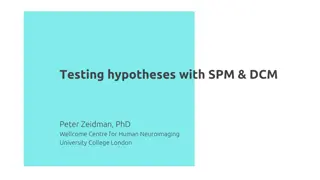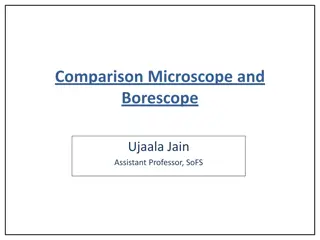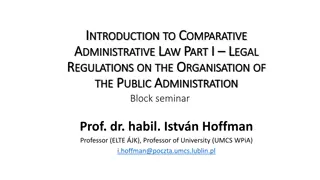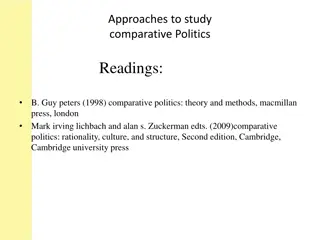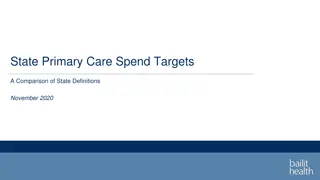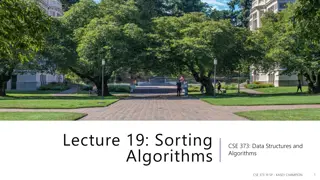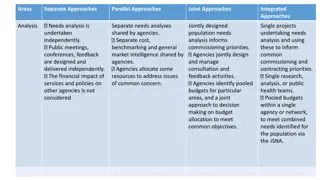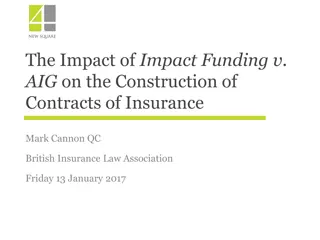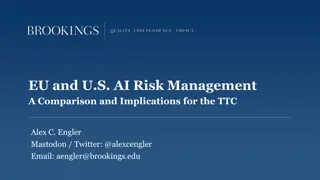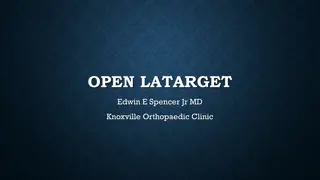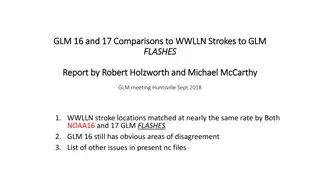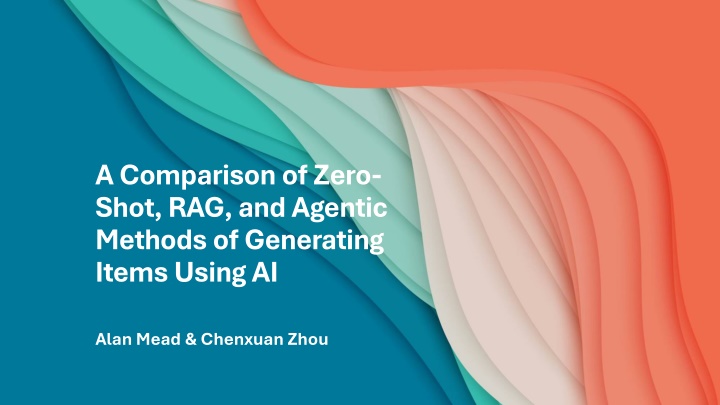
Advanced AI Strategies for Generating Knowledge-based Exam Items
Explore the comparison of three AI methods - Zero-Shot, RAG, and Agentic - for generating certification exam items. Learn how these strategies leverage prompt-based control to enhance item creation and review processes efficiently.
Download Presentation

Please find below an Image/Link to download the presentation.
The content on the website is provided AS IS for your information and personal use only. It may not be sold, licensed, or shared on other websites without obtaining consent from the author. If you encounter any issues during the download, it is possible that the publisher has removed the file from their server.
You are allowed to download the files provided on this website for personal or commercial use, subject to the condition that they are used lawfully. All files are the property of their respective owners.
The content on the website is provided AS IS for your information and personal use only. It may not be sold, licensed, or shared on other websites without obtaining consent from the author.
E N D
Presentation Transcript
A Comparison of Zero- Shot, RAG, and Agentic Methods of Generating Items Using AI Alan Mead & Chenxuan Zhou
Introduction Generative AI is controlled by prompts Studying different prompting strategies is important Jones & Becker We compared three prompting strategies for generating knowledge-based certification exam items: Zero-Shot: Prompting the AI without any examples Agentic: Enabling the AI to autonomously review/revise items RAG: Retrieval augmented generation Usually, submitted to gpt-4-turbo AI engine through an API call with Temperature = 0.80
Zero-Shot AIG (Prompting without any examples) This is the same as past research (Mead & Zhou, 2024; Doughty et al, 2024), but using GPT-4 (specifically gpt-4-turbo) Prompt (generate item):Write a short scenario and a multiple-choice item with the following requirements: The must should have four options, with one correct option. Only one of the options may be correct. ... Do not use responses like 'All of the above' or 'None of the above'. The item must begin with a scenario of two or three sentences. The scenario must be related to the question. The item should be written for a psychometrician exam which assess the test-takers' ability in successfully performing the job of psychometrician The item should be relevant to {Blueprint domain}. More specifically, the item should focus on assessing knowledge about: {specific item topic}
Agentic (Enabling the AI to autonomously review/revise items) Prompt #1 (generate item): (same as zero-shot) Prompt #2 (review item): You are a test development support bot focused on reviewing multiple-choice test items on a psychometrician exam. Each multiple-choice item to be reviewed is expected to have a stem . You will evaluate the item on the following aspects .... Does the item assess the "specific_topic"? If not, include an explanation in a separate field "on_topic_explanation" {item text} Prompt #3 (revise; only if review was NOT a pass): You will modify the original item to fix the issues identified in the reviewer's comments. {review response} {item text}
RAG (Retrieval augmented generation) Retrieval is a whole discussion; we actually used AG We hand-picked sections of the text related to our item topics So, this is "AG" (which is a "best-case" scenario for RAG) Same prompt as zero-shot with augmentation (in red) Prompt (generate item): Write a short scenario focus on assessing knowledge about: {specific item topic} ## Please use the following augmentation information when constructing your response: {Chunk1} {Chunk2}... {Chunk k}
RQ1: How useable are the items? We generated 50 psychometric item topics for Bill Revelle s An introduction to psychometric theory with applications in R We generated 50 4-option MCQ items using each approach We also replicated this once to evaluate novelty of the AIG items We both rated the items on a 1-4 scale: 1 = Unusable/Needs to be completely rewritten 2 = Substantial edits needed (e.g., rewrite all distractors) 3 = Minor edits needed (e.g., clarify stem; revise one distractor) 4 = Perfect/Almost perfect (e.g., missing a single word)
Specific item topic: Regression to the mean Zero-shot/Agentic with gpt-4-turbo; Usability = 2 During a study on student academic performance, it was observed that students who scored exceptionally high or low on their first test tended to have scores closer to the average on subsequent tests. What statistical phenomenon best explains this observation? a) Regression to the mean b) Analysis of variance (ANOVA) c) Pearson correlation d) Standard deviation distractors Implausible RAG with gpt-4-turbo; Usability = 3 In a study examining the heights of children based on the heights of their parents, it is observed that children of very tall or very short parents tend to be closer to average height. How should this phenomenon be interpreted? a) This is an example of regression to the mean, where extreme values in one variable lead to less extreme values in a related variable in its next observation. b) This indicates a problem with data collection, suggesting bias in height measurement. c) This suggests that height is not hereditary and is largely influenced by environmental factors. d) This indicates a perfect positive correlation, implying that parents' heights perfectly predict the height of their children. Correct response Is too long
Mean Item Usability No method is clearly better Agentic may be slightly better About 90% of the items rated as 4 (ready) or 3 (needs minor edits) Moderate inter-rater agreement ICC(1) ~ 0.65 ICC(2) ~ 0.79 Zero-Shot 3.33 1 0 2 2 19 9 17 0.69 Agentic 3.46 1 0 1 1 15 11 21 0.58 RAG 3.29 2 1 3 5 7 13 19 0.68 Mean 1.0 1.5 2.0 2.5 3.0 3.5 4.0 r(1,2)
Analysis of AI Item Flaws Zero-shot count 10 5 3 0 1 0 8 5 1 Agentic count 2 5 3 0 1 0 8 5 1 RAG Agentic approach was only effective in adding scenarios Most common errors: Answer cue (especially RAG) Implausible distractors (especially zero-shot and agentic approach) No scenario (especially zero-shot and RAG) Lack of clarity RAG-specific issues: More answer cues One item had typo carried over from the original text Inappropriate RAG-related content Error type no scenario answer cue more than one key no correct answer wrong key no options generated implausible distractors lack of clarity off-topic not enough information to solve the item grammatical error or typo refers to RAG text corpus % % 4% 10% 6% 0% 2% 0% 16% 10% 2% count 8 12 5 2 0 0 4 4 0 % 20% 10% 6% 0% 2% 0% 16% 10% 2% 16% 24% 10% 4% 0% 0% 8% 8% 0% 1 2% 1 2% 0 0% 0 0 0% 0% 0 0 0% 0% 1 1 2% 2% Item without error 20 40% 25 50% 20 40%
RQ2: How replicable is useability? Rater 1 evaluated both replications Average item usability was similar across runs Agentic: 3.50 vs. 3.52 RAG: 3.34 vs. 3.38 Items generated for the same topic across runs were rated as similarly usable Agentic: 62% same rating RAG: 76% same rating Both: > 95% close rating Agentic Run1 (mean=3.50) Run2 (mean=3.52) 1 2 3 4 Column Sum Row Sum 1 2 17 30 50 1 2 3 4 1 0 0 0 1 0 1 0 1 2 0 0 9 9 0 1 8 20 29 18 RAG Run1 (mean=3.34) Run2 (mean=3.38) 1 2 3 4 Column Sum Row Sum 1 4 20 25 50 1 2 3 4 1 0 0 1 2 0 2 1 0 3 0 2 15 4 21 0 0 4 20 24
Comparison with the strawberry models Generated items using the beta agentic strawberry models o1-mini and o1-preview Using rater 1 data only Randomly chose 15 items Strawberry models created items with slightly higher usability In our pretesting, o1 model reviews were noticeably better: Identified item flaws like answer cue, multiple correct options Mean Usability 3.23 3.27 3.17 3.43 3.47 GPT model AIG approach gpt-4-turbo gpt-4-turbo gpt-4-turbo o1-mini o1-preview Zero-shot Agentic RAG Zero-shot/Agentic Zero-shot/Agentic Actual o1 comment: The stem closely mirrors the wording of the correct option, , which may cue test-takers to the correct answer.
Zero-shot with o1-mini; Usability = 4 Zero-shot/Agentic with gpt-4-turbo; Usability = 2 During a study on student academic performance, it was observed that students who scored exceptionally high or low on their first test tended to have scores closer to the average on subsequent tests. What statistical phenomenon best explains this observation? a) Regression to the mean b) Analysis of variance (ANOVA) c) Pearson correlation d) Standard deviation A psychometrician conducts a study where participants with extreme scores on an anxiety questionnaire are reassessed after six months. It is observed that their follow-up scores are closer to the average compared to their initial extreme scores. What statistical phenomenon does this scenario best illustrate? a) Regression to the mean b) Selection bias c) Reliability decrement d) Confirmation bias Implausible distractors RAG with gpt-4-turbo; Usability = 3 In a study examining the heights of children based on the heights of their parents, it is observed that children of very tall or very short parents tend to be closer to average height. How should this phenomenon be interpreted? a) This is an example of regression to the mean, where extreme values in one variable lead to less extreme values in a related variable in its next observation. b) This indicates a problem with data collection, suggesting bias in height measurement. c) This suggests that height is not hereditary and is largely influenced by environmental factors. d) This indicates a perfect positive correlation, implying that parents' heights perfectly predict the height of their children. Zero-shot with o1-preview; Usability = 4 A psychometrician administers a cognitive test to a group of individuals. She notices that those who scored extremely high or low on the first test tend to score closer to the average on a retest, even without any intervention. What statistical phenomenon best explains this observation? a) Regression to the mean b) Practice effects c) Sampling bias d) Measurement error Correct response Is too long Specific item topic: Regression to the mean ; chosen because gpt-4 failed
Model Costs Model gpt-4-turbo Zero-shot: $0.57 for 50 items (about a penny/item) Agentic: $0.89 for 50 items (about 1.8 pennies/item) RAG: $1.16 for 50 items (about two pennies/item) Model o1-mini Zero-shot: $0.40 for 25 items (about 1.3 penny/item Zero-shot with review: $0.64 for about 20 items (about 3 pennies/item) Model o1-preview Zero-shot: $3.75 for 25 items (about 15 pennies/item) Zero-shot with review: $4.65 for about 20 items (about 23 pennies/item) Cost per item ($) 0.2325 0.25 0.20 0.1500 0.15 0.10 0.05 0.0320 0.0232 0.0178 0.0160 0.0114 0.00 o1-mini o1-mini gpt-4-turbo gpt-4-turbo gpt-4-turbo o1-preview o1-preview Zero- shot Agentic RAG Zero- shot Zero- shot with review Zero- shot Zero- shot with review
Conclusions Prompting strategy didn t matter that much Maybe because 90% of the items were pretty good The new, agentic strawberry models were both a bit better And not that different from each other Except in cost; o1-preview was wildly more expensive Current SOTA AI models produce good (imperfect) items We will continue to need SMEs to review all items and revise many Will this generalize to other domains? Maybe? There is no psychometrics v2.0; no IL state and Federal psychometrics
Thank you! Questions?


